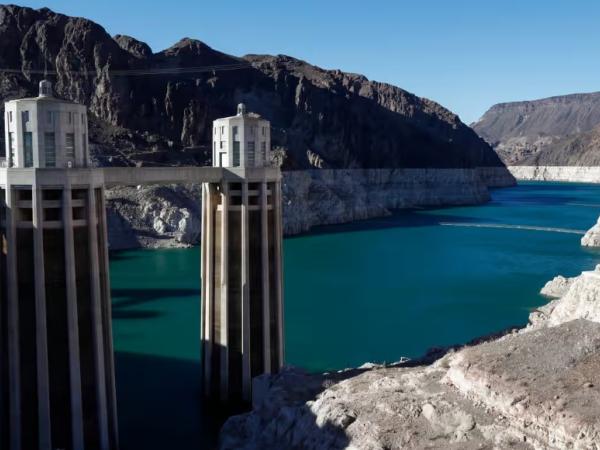
Colorado River talks stall as Utah, other states miss key deadline
"The difference between the two basins interpretation of those parts of the Colorado [River] Compact is the reason why there's a disagreement over how much the Upper Basin should sign up for in terms of leaving more water in the system," Sarah Porter, director of the Kyl Center for Water Policy at Arizona State University, told The Tribune last week.

ASU organizations seek solutions to Colorado River shortages
Cynthia Campbell, the director of policy innovation for ASU's Arizona Water Innovation Initiative, said "there is no plan" prepared to replace the prior agreement. For about three years, states have been negotiating with no progress.
"The seven states cannot agree on how to divide up a smaller river, and how to deal with shortage and how to adjust or adapt operating conditions for that shortage," Campbell said.

States That Rely on the Colorado River Miss Deadline to Agree on Cuts
That could add further urgency to the talks, said Sarah Porter, director of the Kyl Center for Water Policy at Arizona State University.
“How much snow you get in a winter can change how motivated people are to make certain deals,” Ms. Porter said.

Can Arizona Maintain Its Drought Response as Water and Money Dry Up?
“We have to come to terms with the fact that we just don’t have the water that we used to have,” said Jay Famiglietti, science director for Arizona State University’s Arizona Water Innovation Initiative. “We have a growing population. We need to grow more food. We still want to pursue economic growth. We just can’t do everything anymore, and so there will have to be painful decisions that are made.”

Feds press states to OK terms for Colorado River
The states have been positioning themselves to argue in court, said Sarah Porter, director of Arizona State University's Kyl Center for Water Policy.
"The negotiators, I think, have tried really, really hard, and sometimes it may just not be possible to come to an agreement," Porter said.
There still may be room to reach a consensus, she said, but if they fail, "we are very, very likely to be in a situation where the states are in court."

Without a deal on the Colorado River, deeper cuts loom. How 9 Arizona cities will respond
And if the price is right, even the most outlandish projects can start to seem more reasonable, experts say. Kathryn Sorensen, director of research at the Kyl Center for Water Policy at Arizona State University, pointed out at the Boulder conference that data centers backed by deep-pocketed tech companies and large tech manufacturers are part of Arizona’s busy market for new water rights.

The water war Trump hasn’t blown up
“It is literally like, if you could imagine all the worst possible conditions coming together all at once, that’s exactly what’s happening on the Colorado River,” said Kathryn Sorensen, who led Phoenix’s water department for years and is now with the Kyl Center for Water Policy at Arizona State University.

ASU program educates real estate professionals on Arizona water affairs
As Arizona continues to navigate long-term water challenges, ensuring that agents are informed and equipped to communicate accurately about water is critical for their clients and communities.
That’s the motivation behind REAL Water Arizona – Improving Water Education for Real Estate Professionals, a new project led by Danielle Storey, user experience researcher with the Arizona Water Innovation Initiative (AWII), and Harry Cooper, the initiative’s director of water conservation innovation.

When In Drought, Farm Your Moisture
“We’ve gotten really good at moving surface water, and really good at treating wastewater to irrigate crops, and even desalination of oceans to irrigate,” said Paul Westerhoff, an environmental engineer at Arizona State University. He’s also the president of the International Atmospheric Water Harvesting Association, which was established this past summer as a way to coordinate the burgeoning industry. Atmospheric water harvesting, he told Offrange, is a “more intentional way” to take water out of the air.

What’s holding up the Colorado River negotiations? Experts break down the sticking points.
“I think, if the definition of failure is that they don’t come to an agreement, we’ll know on Nov. 11,” said Sarah Porter, director of the Kyl Center for Water Policy at Arizona State University. “My sense is that they’ve all tried really hard.”